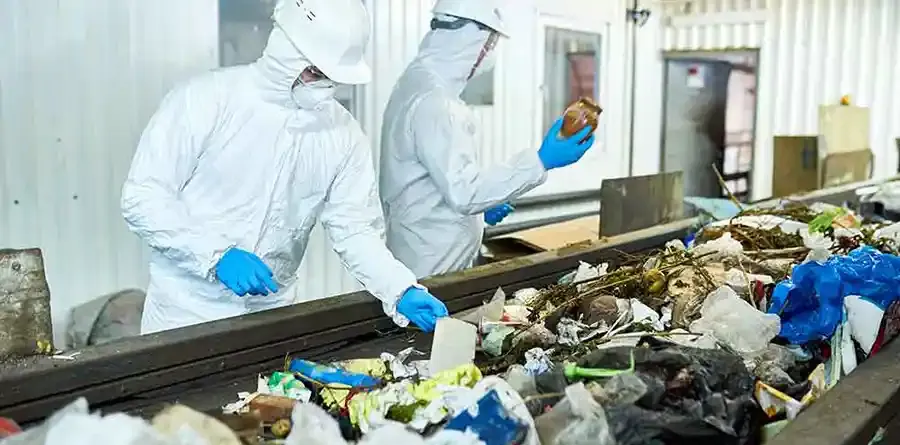Hyundai Motorstudio Senayan Park
Hyundai Motorstudio Senayan Park
Newsroom
The official news from Hyundai Motorstudio Senayan Park and a collection of innovative articles on mobility and sustainability here.
-
7 Safe Steps on Processing Hazardous Waste
- Hyundai Motorstudio Senayan Park Senayan Park 2022.06.03
-
Processing hazardous waste in the proper way will not only keep the environment clean, but also ensure safety and health. This applies not only to industry, as well as households.As you may know, some household waste contains hazardous substances. This type of waste is clearly dangerous, that's why special treatment is needed so that no one will be contaminated with chemical elements from the products that are used.Improper processing can trigger the release of chemical substances into the air, soil, and water that can hit anyone around. Though, what is the safe way for processing hazardous waste?
Hazardous Waste Characteristics
Hazardous waste can be classified into biological, chemical and physical groups. Each classification has the characteristics of reactive, corrosive, ignitable, and toxic.Toxic waste means poisonous, even in small amounts. The effects are bad, even causing acute illness and death. Some have carcinogenic properties that may trigger cancer, or are mutagenic that may cause biological changes.Reactive waste is chemically unstable, and reacts to water or air which can trigger an explosion or toxic fumes. Meanwhile, ignitable waste is more flammable even at low temperatures. In contrast, corrosive waste has a high acidity level which can damage the skin and even destroy solid materials.
In accordance with government regulation, anyone who produces hazardous waste is obliged to manage, reduce, store, collect, and even have a permit for certain classification.Processing Hazardous Waste
Processing hazardous waste is not an easy task. The reason is clear, because it is more dangerous. First and foremost is to identify the type, and then process it according to the level of danger.1. Identify The Type
Identifying the type of waste is an important step in hazardous waste management. The main goal is to know the type and how to handle it. This step should be taken as soon as possible before the product is stored or disposed of.
The levels of chemical substances in each waste are different, and this must be a concern. Misidentification is bad, especially for carcinogenic waste.2. Use Proper Storage
To properly store hazardous waste, choose the recommended container according to the classification. Use a lockable container to prevent the release of harmful substances. Make sure the container is compatible and has corrosion resistant and weather resistant features.If it has to be stored, make sure all storage media are labeled with hazardous waste that is not easily damaged. If you use a plastic container, try to wrap it with aluminum foil to make it more impermeable.3. Keep the Storage Area
Not only storage, the area must be given the same attention. Hazardous waste must be placed in a dedicated area that should not be accessible. Storage areas must be clearly marked with danger signs that everyone can see.Don't forget to lock to avoid anyone coming inside, especially children. As part of the procedure, try to check regularly, especially for industry. Regular checks can tell you if there are problems.4. Know What the Requirement
Because hazardous waste is different from waste in general, the treatment is different. Depending on the classification, the tools and handling processes required are different.Waste lamps can be handled with simple steps even if they contain mercury and nickel which are harmful to the body. Standard gloves and masks will be enough to protect the exposure.It's entirely different for chemical-based paints. Wearing an N95 mask is a must when dealing with paint waste because the chemical substance can harm the respiratory system, as well as with gloves made of rubber or latex.5. Understand The Type
Hazardous waste is very diverse in type, as well as the chemical substance inside it. By knowing the type, the proper treatment can be applied. Understanding the type is crucial to keep the environment safe and healthy.At a minimum, understand the basic substance from the products. The best tip is to read what is written on the packaging. Liquid waste has a different composition from solid waste, as well as its chemical elements. Liquid waste is more prone to spread as air blows, while solid waste is not.6. Handling Method
Hazardous waste can be handled by physical, biological, thermal, or chemical methods. Chemical methods include ionic change, oxidation, reduction, and normalization. Meanwhile, the thermal method will neutralize and even destroy the chemical elements.Biological methods involve microbes to decompose the waste, especially for liquid waste. For the physical method, the handling involves sedimentation, evaporation, and filtration. This method can be done by 'sealing' waste into concrete, asphalt, or plastic that cannot be separated.7. If You Must Throw It Away…
Hazardous waste that cannot be destroyed by simple processes must be disposed of properly. For most, landfill is the main place to dispose, although this is not a practical solution because it triggers new environmental problems.It is highly recommended that hazardous waste is not disposed of. Two methods are often used are stockpiling or injection. Both 'bury' the waste in the ground, but the process is different.The point, understanding the characteristics of hazardous waste is very important for handling. Due to its different characteristics, processing hazardous waste and the equipment that is required are also different.




